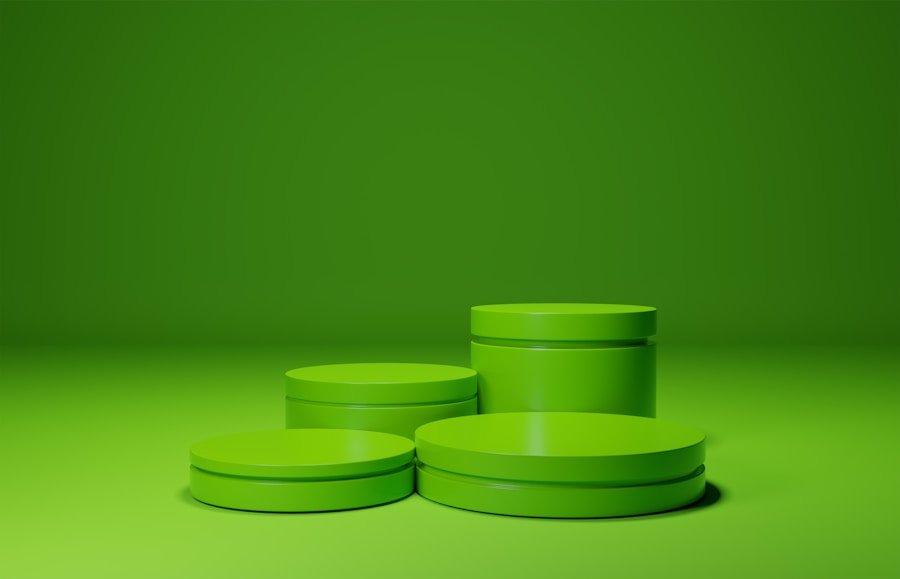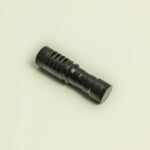When it comes to choosing the right backdrop material for your portraits, there are a few key factors to consider. The first thing to think about is the overall look and feel you want to achieve in your portraits. Do you want a clean, seamless background, or are you looking for something with more texture and depth? If you’re going for a clean, seamless look, a muslin or canvas backdrop might be the best option. These materials are durable and come in a wide range of colors, making them versatile for a variety of portrait styles. On the other hand, if you’re looking for something with more texture and depth, consider using a backdrop made of paper or vinyl. These materials can add visual interest to your portraits and can be easily changed out to create different looks for each session.
Another important factor to consider when choosing a backdrop material is the size and weight of the material. If you plan on using your backdrop for outdoor portrait sessions, you’ll want to choose a material that is lightweight and easy to transport. On the other hand, if you’ll be using your backdrop in a studio setting, you can opt for a heavier material that will stay in place and not wrinkle easily. Additionally, consider the maintenance and care required for each type of material. Some backdrops may require steaming or ironing to remove wrinkles, while others can be easily wiped clean with a damp cloth. By considering these factors, you can choose the right backdrop material that will best suit your needs and help you achieve the perfect look for your portraits.
Lighting Equipment for Flawless Portraits
Lighting is one of the most important elements in creating flawless portraits, and having the right equipment is essential for achieving the desired results. When it comes to lighting equipment for portraits, there are a few key pieces that every photographer should have in their arsenal. The first essential piece of lighting equipment is a good quality strobe or flash. This will provide the main source of light for your portraits and can be used to create a variety of different lighting effects. Additionally, having a reflector on hand is also crucial for bouncing light back onto your subject and filling in shadows. Reflectors come in various shapes and sizes, and can be used to create soft, flattering light that enhances your subject’s features.
In addition to strobes, flashes, and reflectors, having a variety of light modifiers is also important for creating flawless portraits. Softboxes, umbrellas, and beauty dishes are all popular light modifiers that can be used to control and shape the light in your portraits. Softboxes create soft, diffused light that is flattering for portraits, while umbrellas can be used to create a broader, more even light source. Beauty dishes are great for creating dramatic, high-contrast lighting that adds depth and dimension to your portraits. By having a variety of lighting equipment at your disposal, you can create stunning portraits that showcase your subject in the best possible light.
Essential Camera Gear for Capturing Stunning Portraits
When it comes to capturing stunning portraits, having the right camera gear is essential for achieving professional results. The first piece of essential camera gear for portraits is a high-quality DSLR or mirrorless camera. These types of cameras offer superior image quality and allow for greater control over settings such as aperture, shutter speed, and ISO. Additionally, having a variety of lenses is also important for capturing stunning portraits. A fast prime lens with a wide aperture, such as a 50mm f/1.8 or 85mm f/1.4, is ideal for creating beautiful bokeh and isolating your subject from the background. A zoom lens with a versatile focal range, such as a 24-70mm or 70-200mm, is also useful for capturing a variety of different portrait styles.
In addition to a high-quality camera and lenses, having a sturdy tripod is also essential for capturing stunning portraits. A tripod allows you to stabilize your camera and ensure sharp, clear images, especially in low light situations or when using slower shutter speeds. Additionally, having a remote shutter release can also be helpful for minimizing camera shake and capturing candid moments without having to physically touch the camera. By having the right camera gear at your disposal, you can capture stunning portraits that showcase your subject in the best possible light.
Backdrop Support Systems: What You Need to Know
When it comes to setting up your portrait backdrop, having the right support system is crucial for ensuring that your backdrop stays in place and looks professional. There are several different types of backdrop support systems available, each with its own advantages and disadvantages. The most common type of backdrop support system is a set of background stands with crossbars. These stands are adjustable in height and width, making them versatile for different sized backdrops. They are also easy to set up and take down, making them ideal for photographers who need to transport their equipment frequently.
Another popular option for backdrop support systems is a wall-mounted system. This type of system allows you to hang your backdrop directly on the wall using hooks or brackets, eliminating the need for stands altogether. This can be a great space-saving option for photographers who have limited studio space or who want a more permanent setup. However, it’s important to ensure that the wall can support the weight of the backdrop and any additional accessories such as lighting equipment or props. By considering these factors, you can choose the right backdrop support system that will best suit your needs and help you create professional-looking portraits.
Props and Accessories to Enhance Portrait Backdrops
In addition to choosing the right backdrop material and support system, incorporating props and accessories into your portrait sessions can enhance the overall look and feel of your portraits. Props can add visual interest and personality to your portraits, helping to tell a story or convey a specific theme or mood. When choosing props for your portrait sessions, consider items that are relevant to your subject’s interests or hobbies, as well as items that complement the overall style of the portrait. For example, if you’re photographing a musician, incorporating musical instruments or sheet music into the backdrop can add depth and visual interest to the images.
In addition to props, using accessories such as fabric drapes or curtains can also enhance the look of your portrait backdrops. Fabric drapes can add texture and dimension to your backdrop, creating a more visually interesting setting for your portraits. Additionally, using accessories such as flowers, plants, or decorative elements can add color and visual interest to your portraits, helping to create a more dynamic and engaging composition. By incorporating props and accessories into your portrait sessions, you can enhance the overall look and feel of your portraits and create images that are visually compelling and unique.
Creating Depth and Texture in Portrait Backdrops
Creating depth and texture in portrait backdrops is essential for adding visual interest and dimension to your images. One way to create depth in your backdrops is by using layers of fabric or materials with varying textures. For example, layering sheer fabric over a solid backdrop can create a sense of depth and dimension in your images, adding visual interest and creating a more dynamic composition. Additionally, using textured backdrops such as brick walls or wooden panels can add depth and visual interest to your portraits, creating a more visually compelling setting for your subjects.
Another way to create depth and texture in portrait backdrops is by using lighting techniques to create shadows and highlights on the backdrop itself. By using directional lighting or gels to create patterns or textures on the backdrop, you can add visual interest and dimension to your images, creating a more dynamic and engaging composition. Additionally, using props or accessories such as plants or decorative elements can also add texture and depth to your backdrops, creating a more visually compelling setting for your subjects. By incorporating these techniques into your portrait sessions, you can create images that are visually compelling and unique.
Tips for Selecting the Perfect Backdrop for Different Types of Portraits
When it comes to selecting the perfect backdrop for different types of portraits, there are several key factors to consider. The first thing to think about is the overall style and mood you want to convey in your portraits. For example, if you’re shooting formal headshots or corporate portraits, a clean, seamless backdrop in a neutral color such as white or gray may be the best option. On the other hand, if you’re shooting environmental portraits or lifestyle images, consider using a backdrop that complements the setting or location where the portraits will be taken.
Another important factor to consider when selecting the perfect backdrop for different types of portraits is the color scheme and overall aesthetic of the images. For example, if you’re shooting family portraits or children’s portraits, consider using backdrops in bright, cheerful colors that complement the subjects’ clothing or personalities. On the other hand, if you’re shooting dramatic or moody portraits, consider using backdrops in darker colors such as black or deep blue to create a more intense and atmospheric setting for your subjects. By considering these factors and tailoring your backdrop selection to suit the specific needs of each portrait session, you can create images that are visually compelling and unique.
In conclusion, choosing the right backdrop material is essential for creating stunning portraits that showcase your subject in the best possible light. Lighting equipment plays a crucial role in achieving flawless portraits by providing control over light sources and modifiers. Essential camera gear such as high-quality cameras, lenses, tripods, and remote shutter releases are necessary for capturing professional-looking portraits. Backdrop support systems are crucial for ensuring that backdrops stay in place during portrait sessions. Props and accessories can enhance portrait backdrops by adding visual interest and personality to images. Creating depth and texture in portrait backdrops adds visual interest and dimension to images. Finally, selecting the perfect backdrop for different types of portraits involves considering factors such as style, mood, color scheme, and overall aesthetic of the images.
By carefully considering these factors and incorporating them into your portrait sessions, you can create stunning images that showcase your subject in the best possible light while adding visual interest and personality to each image. Whether you’re shooting formal headshots or lifestyle portraits, having the right backdrop material, lighting equipment, camera gear, support systems, props, accessories, depth-creating techniques, and selection tips will help you achieve professional results that stand out from the crowd. With these tools at your disposal, you can create stunning portraits that capture the essence of your subjects while showcasing their unique personalities and individuality.








